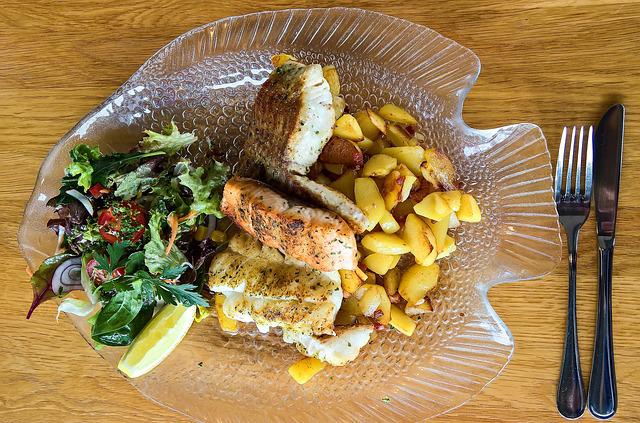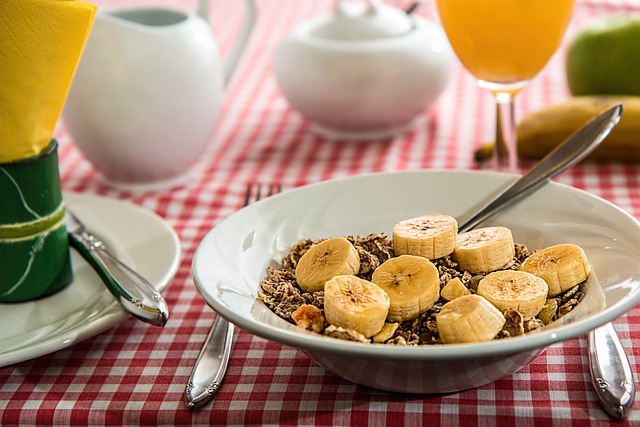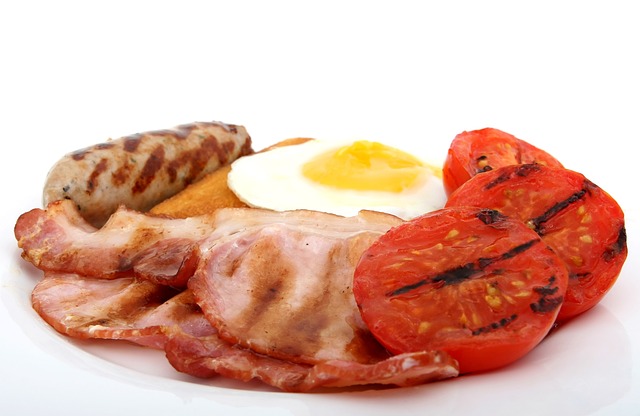The Metabolic Typing diet is based on the idea that your metabolism—how your body burns food for energy—is unique to you and is heavily influenced by genetics. According to the diet, the rate of your metabolism is regulated by two inherited factors: the most dominant autonomic nerve system and the rate of cellular oxidation.
The sympathetic nervous system, which uses more energy than the parasympathetic nervous system, is the most dominant autonomic nervous system. Meanwhile, the rate of cellular oxidation is the pace at which your cells convert food into energy. These elements, according to the diet’s authors, determine your metabolic type, either carbo type, protein type, or mixed type. Furthermore, your metabolic type dictates the types of foods you should consume.
Trisha Fahey and William Wolcott launched the Metabolic Typing Diet in 2001 with the publication of their book “The Metabolic Typing Diet.” According to the authors, eating according to your metabolic type minimizes food cravings, aids in weight loss, and increases energy.
Diet Plan for 7 Days
The Metabolic Typing Diet has no established meal pattern. What you eat, however, is determined by your metabolic type.
Type of Metabolic
There are three types of metabolic systems: protein, carbohydrate, and mixed. Protein has a quick metabolism, carbohydrates have a sluggish metabolism, and mixed has a medium metabolism. Individuals that eat with their metabolic type in mind will adjust their diet depending on the rate of their metabolism, with protein types requiring slower-digesting foods and carb types requiring fast-digesting foods. Each metabolic type is examined in greater detail below.

Protein Classification
Protein types, according to Fahey and Wolcott, have a quick metabolism and must eat slow-digesting nutrients like fat and protein. They emphasize macronutrient allocation and propose that protein types consume a diet that is 45% – 50% protein, 20% fat, and 30% – 35% carbohydrate.
- Day 1: grilled steak with a modest serving of brown rice, an omelet with cheese, leafy vegetables, and salmon.
- Day 2: Plain yogurt with a few berries; chicken thighs with leafy leaves; grilled salmon.
- Day 3: Creamy scrambled eggs; pork chop with sautéed broccoli; a small amount of quinoa and a turkey leg.
- Day 4: Salmon with a dab of cream cheese; green salad with full-fat cheese and steak slices; grilled chicken wings with asparagus.
- Day 5: Hard-boiled eggs; tuna with mayonnaise and celery; roasted pork with a small dish of brown rice.
- Day 6: omelet with bacon, cheese, and eggs; dark chicken meat salad; hamburger without the buns.
- Day 7: Baked egg cups with cheese and spinach; grilled salmon with broccoli; and turkey wings with a mixed green salad.
Carbohydrate Type
Carbohydrate types have a slow metabolism and must eat things that digest quickly. This indicates a diet heavy in carbs and low in fat and protein, with carbs accounting for 70% to 80% of calories, fat accounting for 5% to 10%, and protein accounting for 15% to 20%.

- Day 1: Steel-cut oats with nonfat milk and bananas; an apple with mixed greens with grilled chicken breast; broiled fish, brown rice, and broccoli.
- Day 2: Dry whole-grain toast with berries; turkey sandwich with apple and salad on whole-wheat bread; veggie burger and steamed vegetables
- Day 3: Scrambled egg whites with spinach; vegetable stir fry with brown rice; grilled sole with baked potato and asparagus
- Day 4: Whole-grain porridge with nonfat milk and an apple; leafy green salad with chickpeas and dried fruit; grilled chicken breast with asparagus and quinoa
- Day 5: Whole-wheat toast with apple butter; lean turkey burger on a whole-wheat bun with a mixed green salad; roasted veggies, roasted pork, and brown rice
- Day 6: Overnight oats with nonfat milk and strawberries; baked sweet potato with black beans, nonfat Greek yogurt, and green onions; whole-grain bread with lentil soup, and a mixed green salad
- Day 7: Baked egg white cups with tomatoes and spinach; broiled haddock with steaming green beans and brown rice; turkey breast with roasted sweet potatoes and asparagus.
Type I and Type II
The metabolism of mixed types is average. They do not burn calories excessively slowly or excessively quickly. People with a mixed metabolic type require 40% – 45% of their calories from protein, 50% – 55% from carbohydrates, and 10% – 15% from fat, according to the Metabolic Typing Diet.
- Day 1: An egg white omelet with asparagus and whole-grain bread; leafy greens with salmon and chickpeas; and grilled steak with roasted potatoes and carrots.
- Day 2: Blueberries and whole-grain cereal with nonfat yogurt; grilled chicken in a whole-wheat pita with a banana and salad; broiled salmon with quinoa and steamed vegetables.
- Day 3: Scrambled eggs on whole-wheat toast; pork chop with brown rice and oven-roasted asparagus; fish tacos with mango salsa
- Day 4: Whole-grain toast with nut butter and banana; grilled lean hamburger with romaine lettuce and fruit salad; roasted chicken with sweet potatoes and asparagus.
- Day 5: Hard-boiled eggs with whole-grain bread; tuna salad with whole-grain crackers and an apple; and roasted pork with green beans and brown rice.
- Day 6: Scrambled eggs with whole-wheat English muffin; baked sweet potato with black beans and salsa; and pork chop with unsweetened applesauce and brown rice.
- Day 7: Baked egg cups with spinach and cheese; grilled salmon with broccoli and whole-grain crackers; corn on the cob, roasted turkey, and a mixed green salad
Foods You Can Consume
The Metabolic Typing Diet dictates what you consume based on your metabolic type. Nonetheless, each diet encourages the consumption of more whole foods.
Protein Oriented
Protein types should eat foods high in protein and fat. The diet’s authors recommend eating purine-rich proteins such as organ meats, red meat, dark-meat fowl, herring, and mussels. Eggs, cream, and cheese should all be high in fat. Carbohydrates should be obtained through whole grains and vegetables.
Carbohydrate Oriented
The carbo-type diet plan focuses on complex carbs such as whole grains, fruits, and vegetables. Carbohydrate types should have a small quantity of low-purine protein with each meal, such as white flesh fowl, haddock, and flounder, according to the diet. Carbohydrate types can also consume low-fat dairy products.
Metabolic Mixtures
Mixed kinds can eat a variety of complex carbohydrates, proteins, and lipids.
Things You Shouldn’t Eat
Although the macronutrient composition varies by metabolic type, each diet includes food from all food groups. All three types, however, limit processed carbs and added sugars.
Strategies for Preparing the Metabolic Typing Diet
The Metabolic Typing diet is a long-term eating plan that is based on your genetic metabolic type. Your metabolic type, however, may alter over time, and you may need to modify your food regimen appropriately.
Because there are no meal scheduling guidelines, the Metabolic Typing Diet designers recommend following each metabolic type as indicated in the book. Provide high or low-purine protein at each meal, for example. The Metabolic Typing Diet also recommends using vitamins tailored to your metabolic type.
Proteins with High and Low Purine Content
For all metabolic types, the Metabolic Typing Diet recommends protein at each meal. It does, however, differentiate between high-purine proteins and low-purine proteins.
Purines are chemical substances used by your cells to create DNA and RNA. Purines can be found in meat. Purines in protein meals, according to the authors of The Metabolic Typing Diet, influence the body’s energy-producing systems. High-purine proteins offer energy to protein types but inhibit the synthesis of energy in carbo types.

Advantages of the Metabolic Typing Diet
Most health specialists agree with the Metabolic Typing Diet’s premise that no single diet works for everyone. Yet, the strictness of the dietary programs for the diet types makes long-term compliance difficult.
- Customized plans are available: Proponents of the Metabolic Typing Diet value the fact that their diet is tailored to their body’s chemistry. When it comes to balanced meal plans, customization is vital. The guidelines, however, recommend focusing on eating preferences, culture, and money rather than bodily chemistry.
- Limits processed foods: According to the Metabolic Typing Diet, all diet types should restrict refined carbohydrates (white bread, white rice) and sugar. The dietary guidelines also advise minimizing highly processed foods, beverages, and added sugar. Processed foods are low-cost sources of energy and minerals, but they have been related to health issues such as type 2 diabetes and obesity. Processed-food diets promote calorie intake and weight gain.
The Drawbacks of the Metabolic Typing Diet
The Metabolic Typing Diet makes extensive use of science to describe how the diet works. Sadly, there has been little study to back up these claims.
Inadequate evidence: There has been little research into the Metabolic Typing Diet. According to one small pilot study published in 2008, the questionnaire used by the diet to assess metabolic type may not correctly reflect a person’s real metabolic functioning. Current research, however, suggests that people may benefit from diets that take their unique metabolic phenotype into account, a notion known as metabolizing. Researchers suggest that persons at high risk of certain diseases have a particular metal type and may require more individualized nutrition regimens that match their specific metabolic needs, such as a diet high in fermentable fibers and prebiotics for people at high risk of heart disease. Further research is required in general.
It has a tendency to be restrictive: The authors of The Metabolic Typing Diet recommend that you stick to your diet type for the rest of your life. Any diet that excessively restricts certain macronutrients or food groups, on the other hand, may result in nutrient shortages. Furthermore, restrictive diets are difficult to maintain over time.
Contains saturated fat-rich foods: The protein-type diet promotes high-fat meats, which are likewise high in saturated fat. Consuming animal products high in saturated fat may raise your bad cholesterol and increase your risk of heart disease.

Is the Metabolic Typing Diet a Good Option for You?
Dietary guidelines encourage consuming a well-balanced and diverse diet that includes nutrient-dense foods and beverages from all food groups.
A balanced eating plan should include the following components:
- All varieties of vegetables
- Fruits
- Grains, half of which are entire grains
- Low-fat dairy products or a plant-based substitute
- Protein foods that are high in nutrients
- Oils
Despite the fact that current guidelines include macronutrient ratios, the recommendations focus on nutritional density rather than macronutrient distribution in your diet. Current macronutrient recommendations range from 10% – 35% of calories from protein, 20% – 35% from fat, and 45% – 65% from carbohydrates.
Macronutrient distribution is critical to The Metabolic Typing Diet. Unfortunately, none of the metabolic types corresponded to the dietary recommendations. The protein and mixed versions have more protein, whereas the carbo type has more carbs but less protein.
To Conclude
According to the Metabolic Typing Diet, the things you eat have an impact on your health, weight, and energy. While this is true, the Metabolic Typing Diet’s metabolic types and related food plans may not be suitable for you. Before making any large dietary changes, seek advice from your primary care practitioner or a trained dietician. They can create a balanced food plan that is tailored to your specific objectives and needs.
Note that being on a long-term or short-term diet may not be a good idea for you, and many diets, especially long-term diets, simply do not work. While we do not support fad diets or unsustainable weight loss approaches, we do give the facts so that you can make an informed decision that best suits your nutritional needs, genetic blueprint, budget, and goals.
If weight loss is your aim, keep in mind that reducing weight isn’t always synonymous with being your healthiest self. Exercise, sleep, and other lifestyle factors all have a significant impact on your overall health. The best diet is one that is well-balanced and fits your lifestyle.
